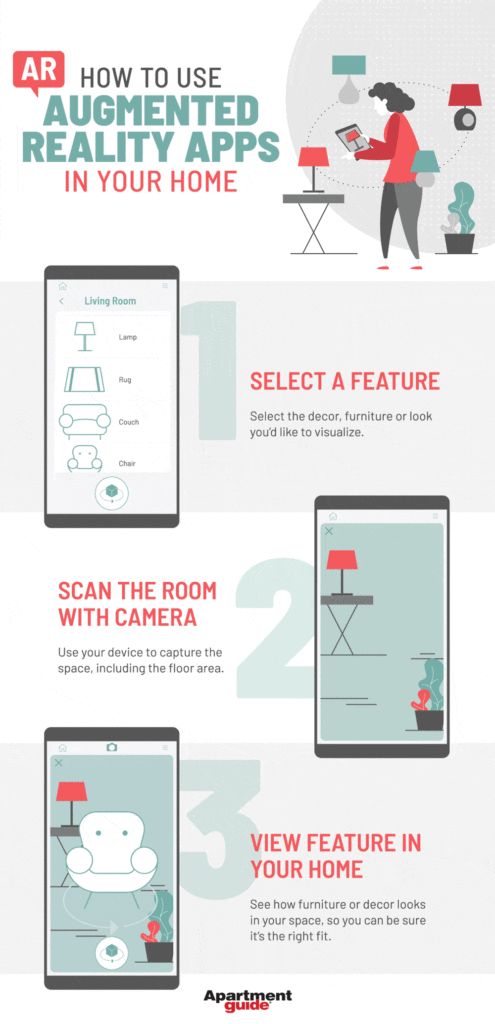Augmented reality has become a buzzword over the past few years, but do you know what it really means? In simple terms, it refers to technology that superimposes digital objects or information onto the real world, creating an interactive experience. This innovative technology has the potential to revolutionize the way we interact with the world around us, from entertainment to education and even healthcare.
Augmented reality is not a new concept, but recent advancements in technology have made it more accessible and user-friendly. With the rise of smartphones and wearable devices, augmented reality has become a mainstream phenomenon, and its applications are virtually limitless. From gaming and marketing to training and simulation, augmented reality is changing the way we perceive and interact with the world, and its impact is only set to grow in the coming years. So, what exactly is augmented reality, and how does it work? Let’s dive in and find out.
Augmented Reality (AR) is a technology that superimposes a computer-generated image on a user’s view of the real world, thus providing a composite view. It is used in various fields, from medicine to gaming, and its potential is huge. AR creates an interactive environment in which users can interact with virtual objects and learn about the world around them in a more immersive way.
- How to use augmented reality?
- Download an AR-enabled app on your device.
- Open the app and follow the instructions.
- Look for the AR content that you want to experience.
- Interact with the content.
Augmented Reality vs Virtual Reality
| Augmented Reality | Virtual Reality |
|---|---|
| AR adds digital elements to an existing environment. | VR creates an entirely artificial environment. |
| Users can interact with real-world objects. | Users can only interact with virtual objects. |
| It is used in many different fields. | It is mainly used for entertainment. |

What is Augmented Reality?
Augmented Reality (AR) is a technology that combines virtual objects with the physical world by overlaying digital information on top of the real world. AR technology is used in various applications, such as entertainment, education, healthcare, and more. It has the potential to revolutionize the way people interact with their environment.
How Does Augmented Reality Work?
At its core, augmented reality (AR) works by combining the physical world with the virtual world. AR enables the user to view physical objects with digital information overlaid on top. This digital information can be anything from text, images, videos, and more. The user can interact with the digital information in real time.
The technology behind AR is complex and involves a combination of computer vision, machine learning, and 3D graphics. Computer vision is used to detect objects in the real world and to track their movements. Machine learning algorithms are used to interpret the data from the real world and to update the virtual world in real time. 3D graphics are used to render the virtual objects in the real world.
Applications of Augmented Reality
Augmented reality has many potential applications, from entertainment to healthcare. In the entertainment industry, AR can be used to create immersive experiences, such as virtual reality games and virtual concerts. In the healthcare industry, AR can be used to provide information about medical procedures and to help medical professionals diagnose and treat patients.
AR can also be used in education to create interactive learning experiences. For example, AR can be used to create virtual classrooms, where students can interact with 3D objects and explore new concepts. AR can also be used to create virtual tours of historical sites and cultural landmarks.
In the business world, AR can be used to create augmented reality shopping experiences and to provide real-time customer service. AR can also be used in manufacturing to help workers assemble products and troubleshoot problems.
The Future of Augmented Reality
As technology continues to develop, the potential applications of augmented reality are expanding. In the future, AR may be used to create virtual reality worlds, where users can interact with virtual objects and explore new ideas. AR can also be used to create immersive experiences, such as virtual reality games and virtual concerts.
As the technology continues to evolve, AR will become more accessible and more widely used. Companies are already investing heavily in AR technology and developing new applications for the technology. In the future, AR will be used in a variety of industries, from entertainment to healthcare.
Frequently Asked Questions
Augmented Reality (AR) is a technology that overlays digital content in the form of text, images, video, and sound onto the physical world. It is a mix of the real and virtual worlds, allowing users to experience and interact with digital content in real-time.
What is Augmented Reality?
Augmented Reality (AR) is a technology that layers digital content onto the physical world. It combines the real and virtual worlds to create a mixed reality experience that allows users to interact with digital content in real-time. AR technology is used in a variety of ways, such as overlaying text, images, video, and sound onto the physical environment. It can be used in entertainment, medical, educational, and industrial applications.
AR technology is becoming increasingly popular, with more companies and organizations utilizing it to create immersive experiences. For example, it is being used for virtual tours, interactive gaming, or for providing information about a physical space. It can even be used to create virtual classrooms, allowing students to interact with each other in a digital environment.
What are the benefits of Augmented Reality?
The benefits of Augmented Reality (AR) are numerous. AR technology can be used to create immersive and interactive experiences that allow users to interact with digital content in real-time. It can also be used to provide detailed information about a physical space or environment. AR technology can be used to create virtual classrooms, allowing students to interact with each other in a digital environment. Additionally, it can be used to enhance entertainment experiences, such as gaming and virtual tours.
AR technology can help to improve the efficiency of processes by providing detailed information about the physical environment. This can be used to improve safety and accuracy in industrial settings, such as manufacturing or construction. Additionally, AR can be used to provide real-time feedback and information about physical objects, allowing users to gain a greater understanding of the environment they are in.
What are the challenges of Augmented Reality?
The challenges of Augmented Reality (AR) are numerous. One of the main challenges is the accuracy of the technology. AR technology is still in its early stages, and accuracy can be an issue. Additionally, the technology requires a lot of data to be collected in order to accurately overlay digital content onto the physical world. This can be challenging and time-consuming.
Another challenge is the cost of AR technology. AR technology can be expensive to develop and implement, and the cost can vary depending on the complexity of the application. Additionally, AR technology requires specialized hardware and software in order to run properly. This can add to the cost of the technology.
What are the applications of Augmented Reality?
The applications of Augmented Reality (AR) are numerous. AR technology can be used in a variety of ways, such as overlaying text, images, video, and sound onto the physical environment. It can be used for virtual tours, interactive gaming, or for providing information about a physical space. It can even be used to create virtual classrooms, allowing students to interact with each other in a digital environment.
AR technology can also be used to improve the efficiency of processes by providing detailed information about the physical environment. This can be used to improve safety and accuracy in industrial settings, such as manufacturing or construction. Additionally, AR can be used to provide real-time feedback and information about physical objects, allowing users to gain a greater understanding of the environment they are in.
What are the advantages of using Augmented Reality?
The advantages of using Augmented Reality (AR) technology are numerous. AR can be used to create immersive and interactive experiences that allow users to interact with digital content in real-time. It can also be used to provide detailed information about a physical space or environment. Additionally, it can be used to enhance entertainment experiences, such as gaming and virtual tours.
AR technology can also help to improve the efficiency of processes by providing detailed information about the physical environment. This can be used to improve safety and accuracy in industrial settings, such as manufacturing or construction. Additionally, AR can be used to provide real-time feedback and information about physical objects, allowing users to gain a greater understanding of the environment they are in.
In conclusion, augmented reality is a rapidly growing technology that has the power to change the way we interact with the world around us. It allows us to enhance our senses and transform our physical surroundings into an immersive digital experience. This technology has already been applied in various fields such as gaming, education, healthcare, and tourism, and the possibilities are endless.
As the technology continues to evolve, we can expect to see even more innovative applications of augmented reality. From improving workplace productivity to enhancing the way we shop and travel, this technology has the potential to revolutionize the way we live our lives. As we continue to explore the possibilities of augmented reality, one thing is for sure – the future is looking brighter than ever.


